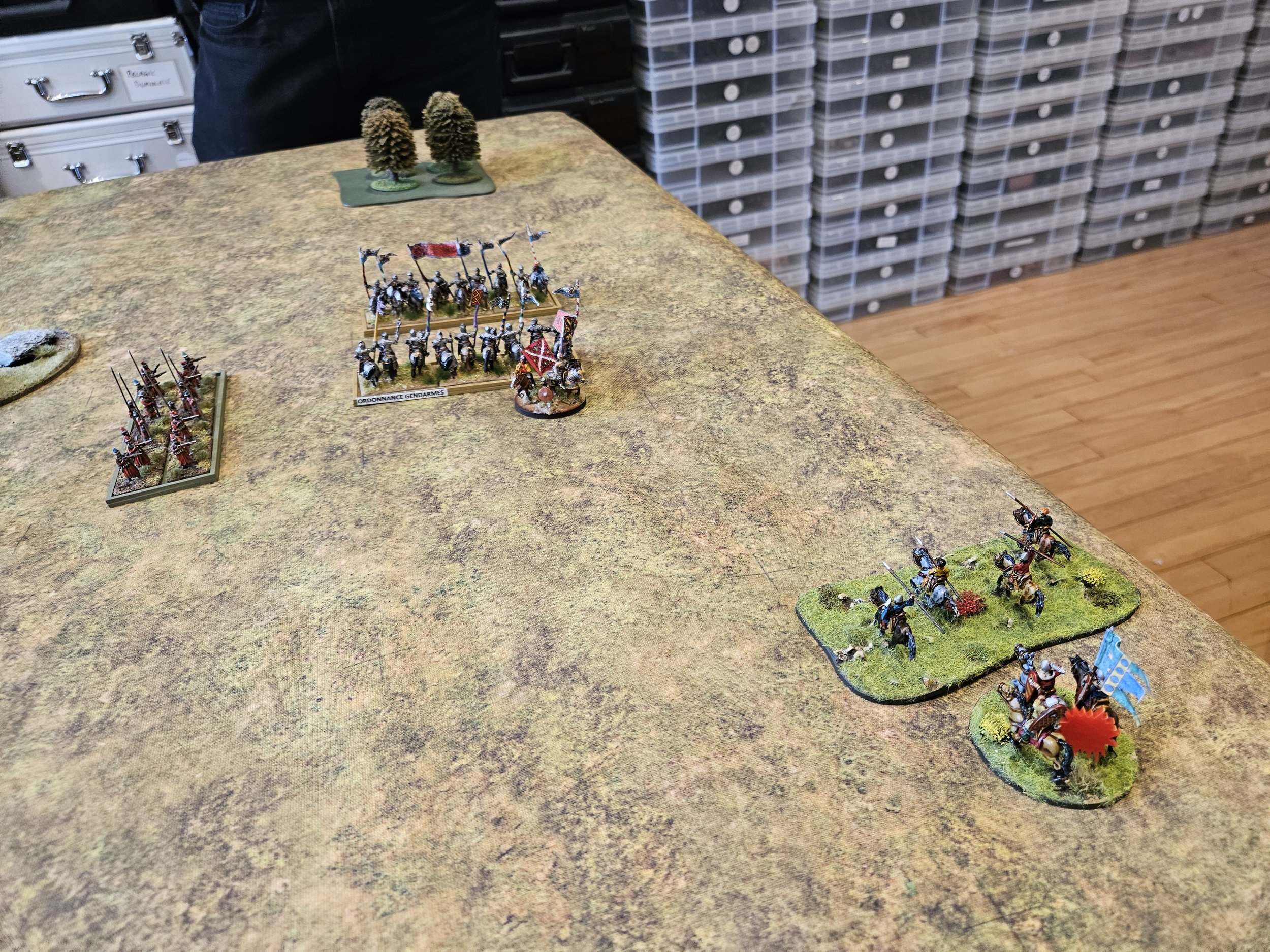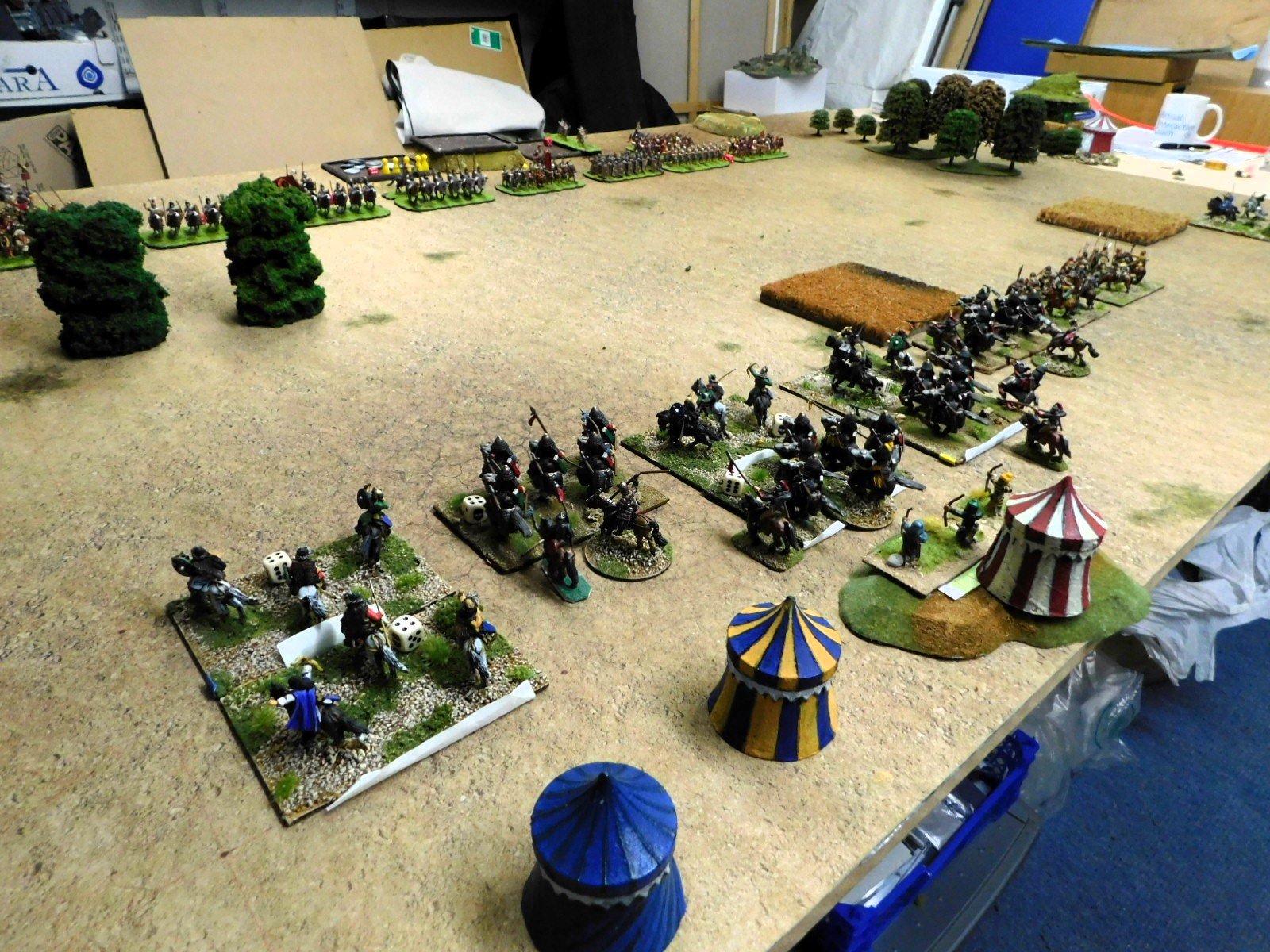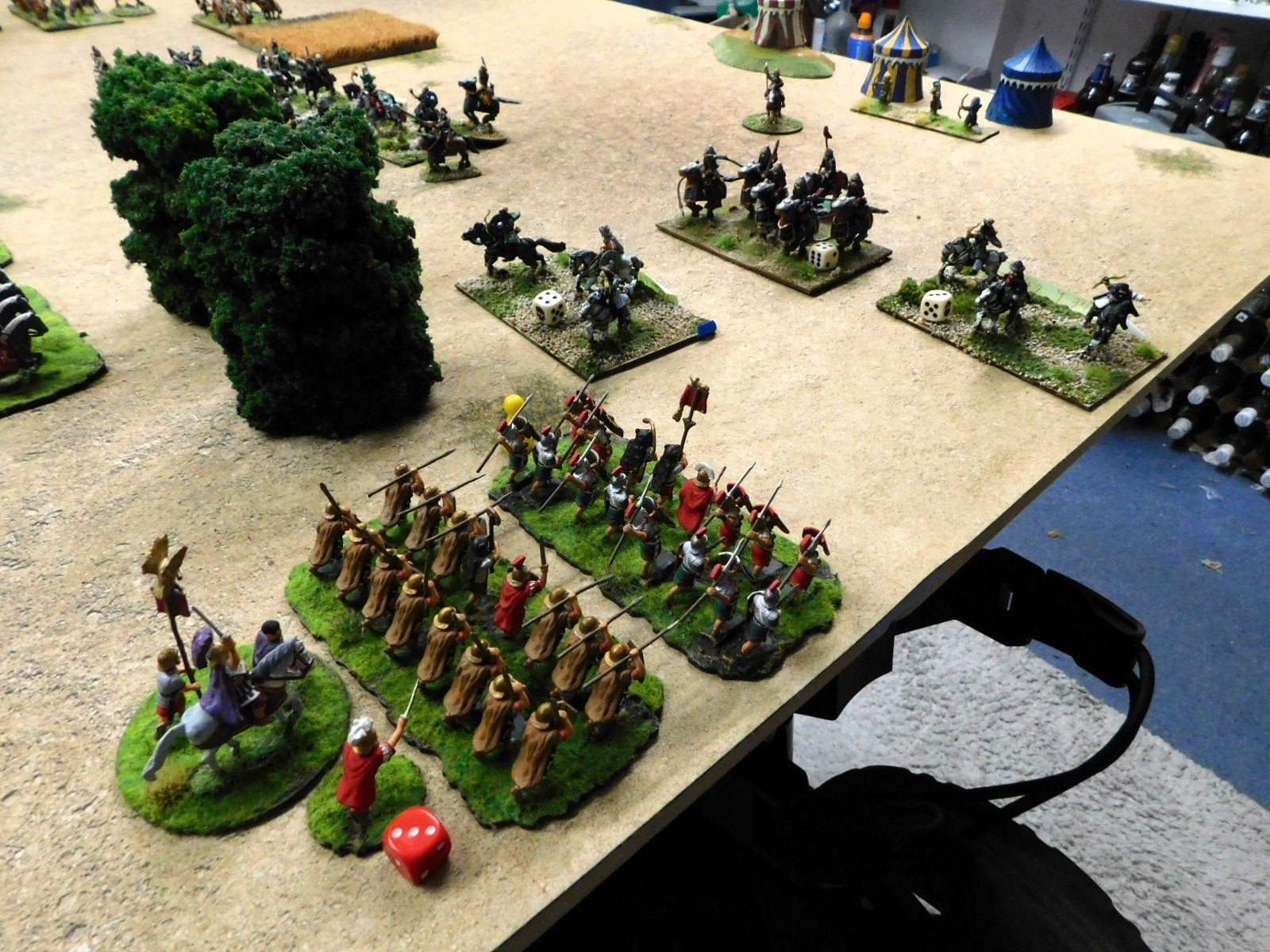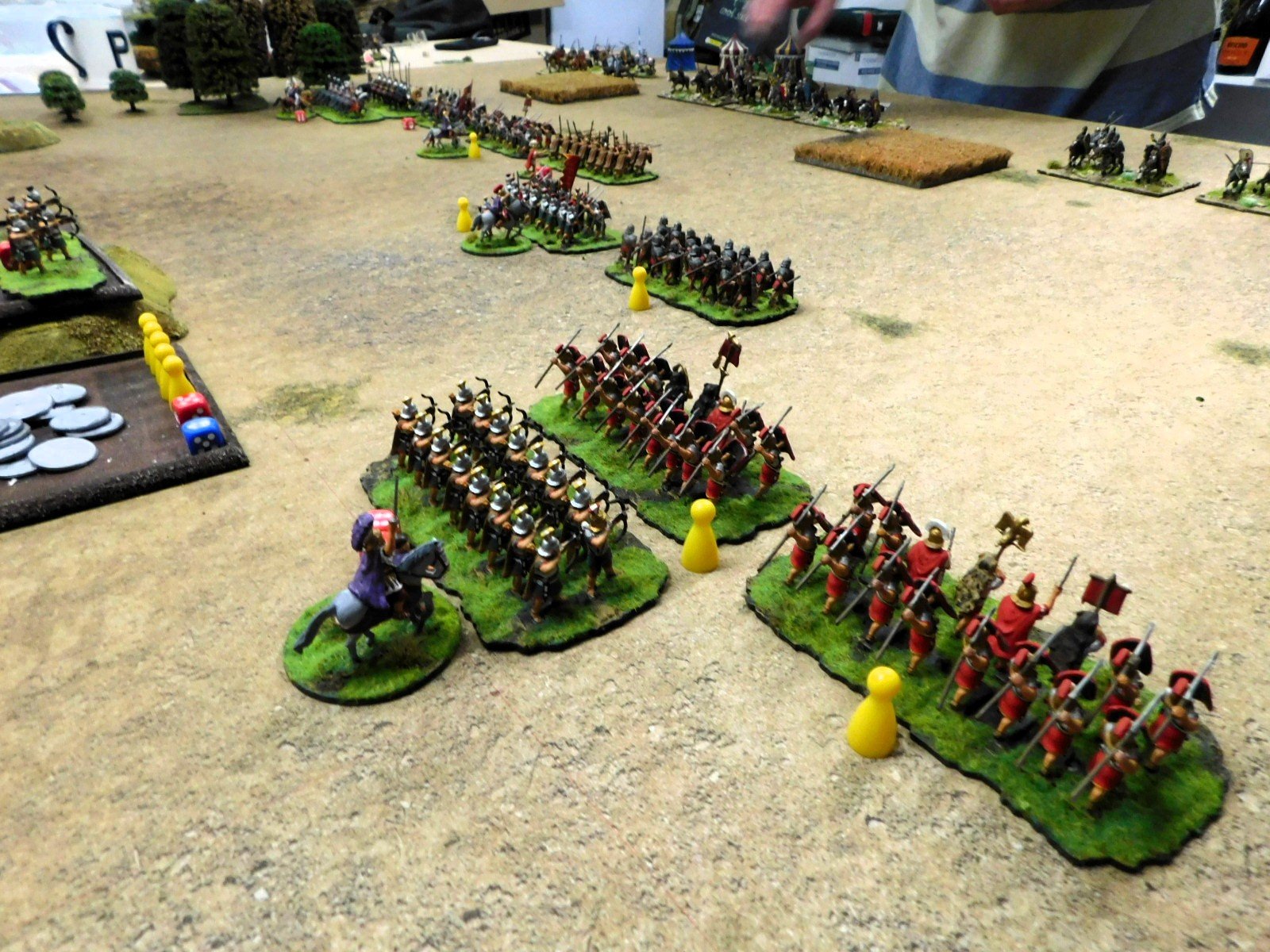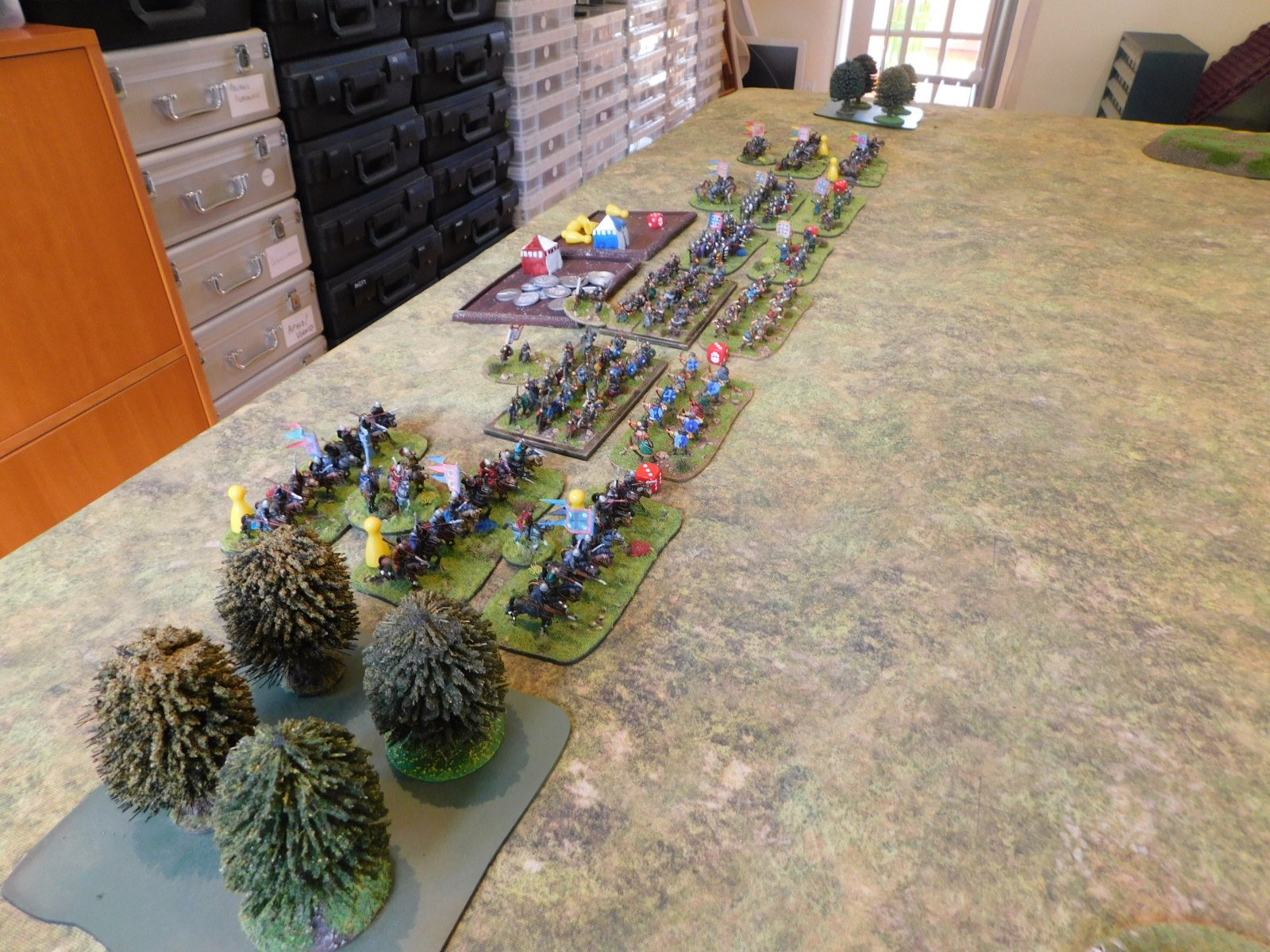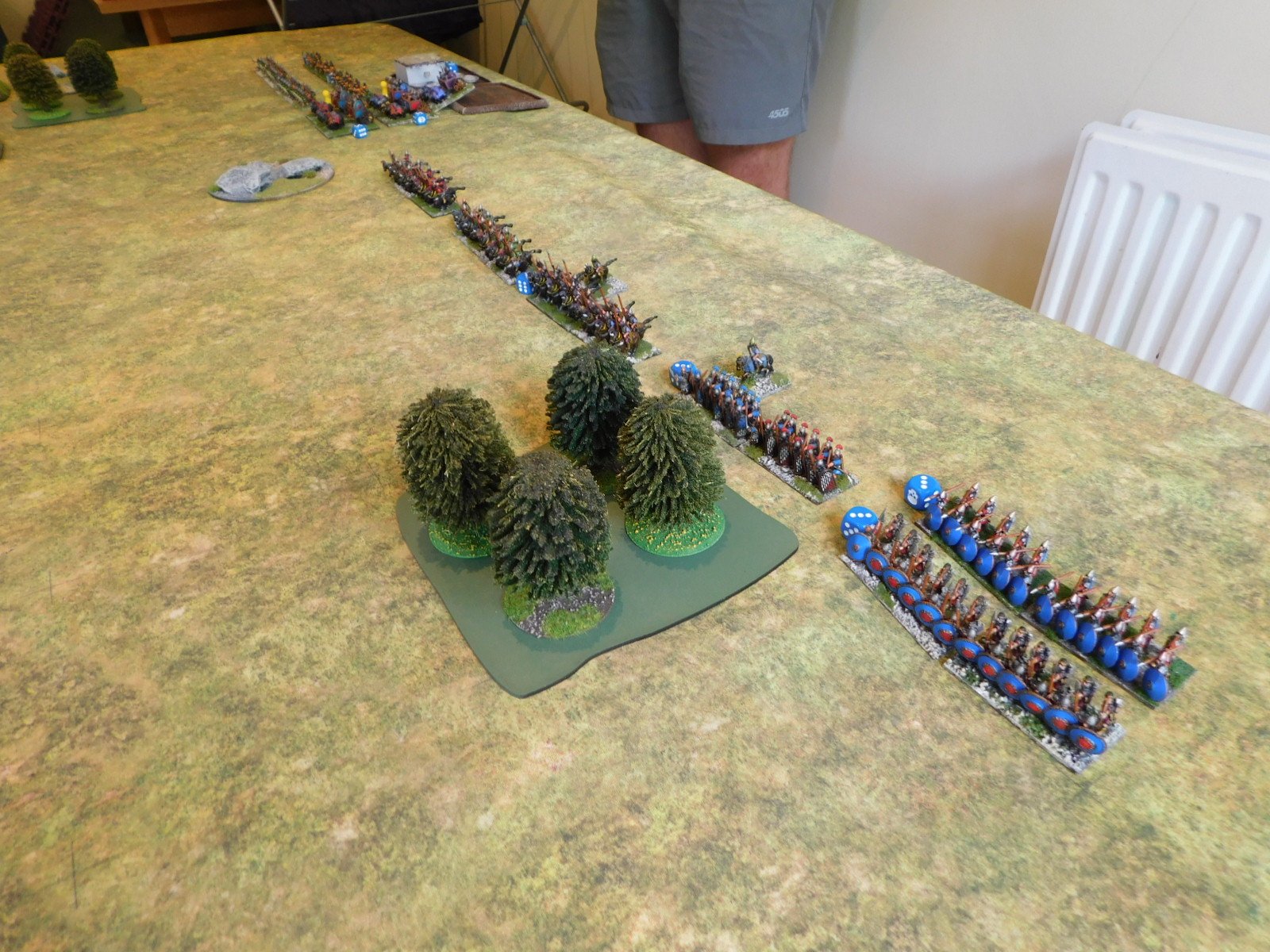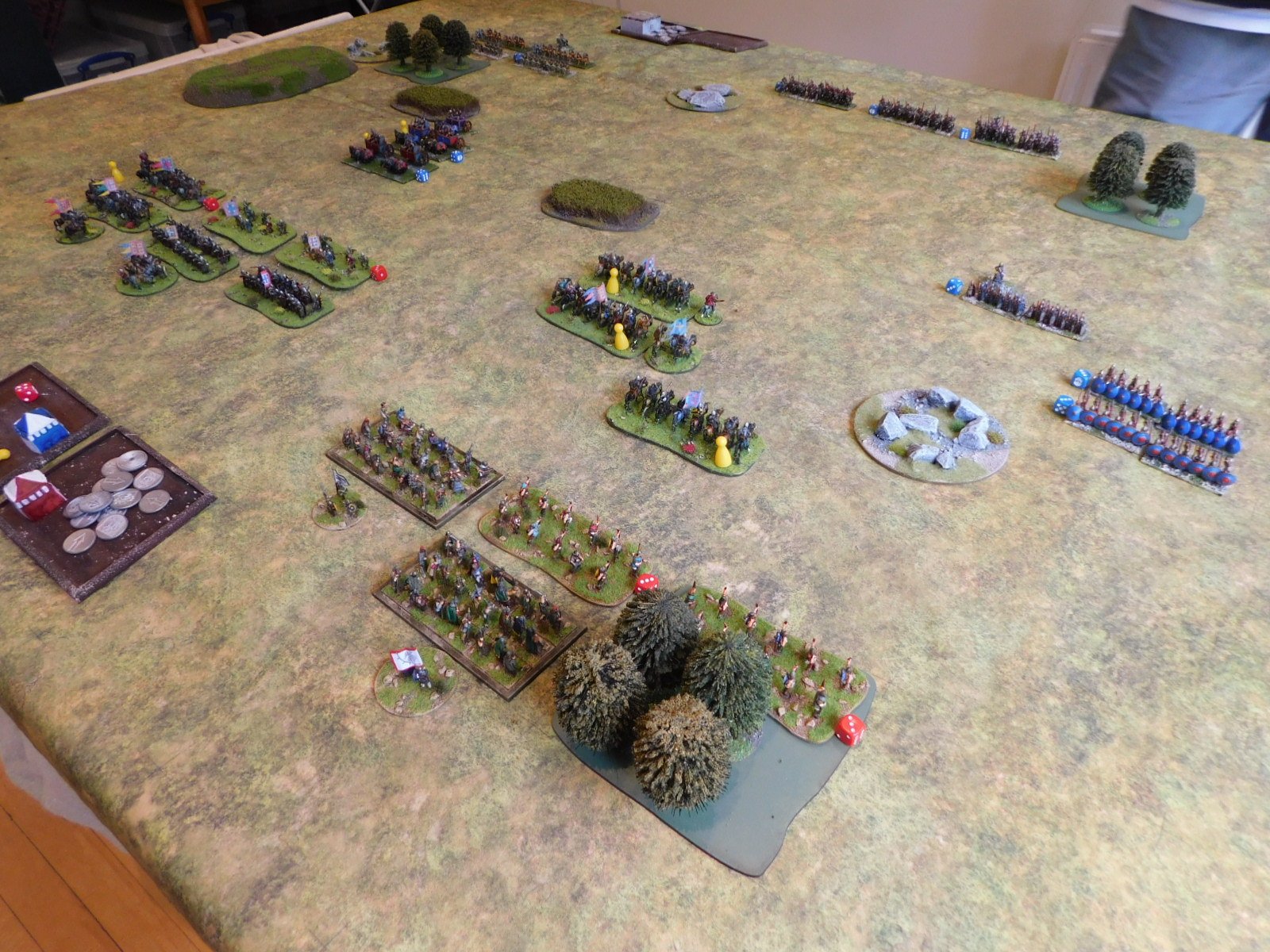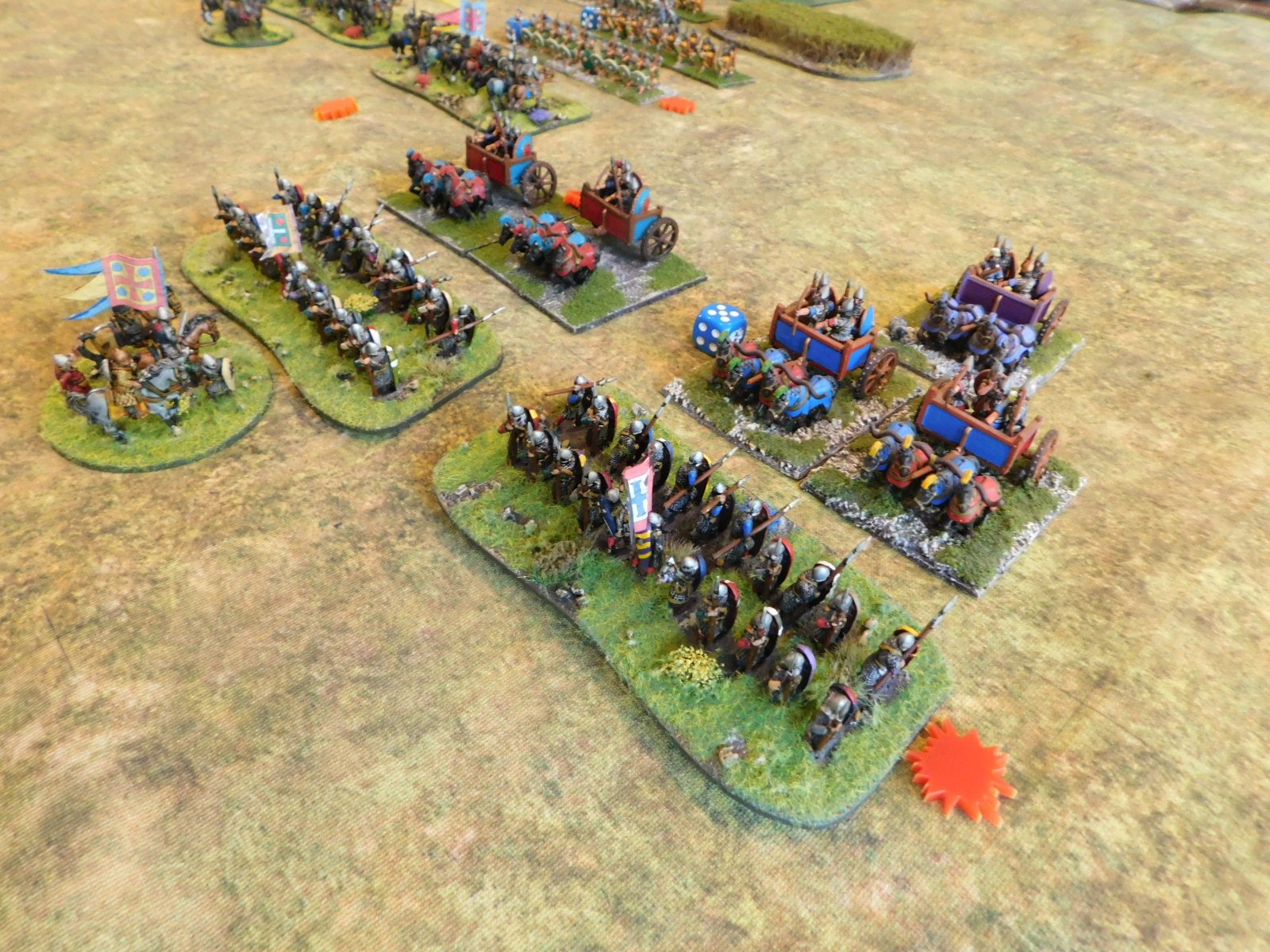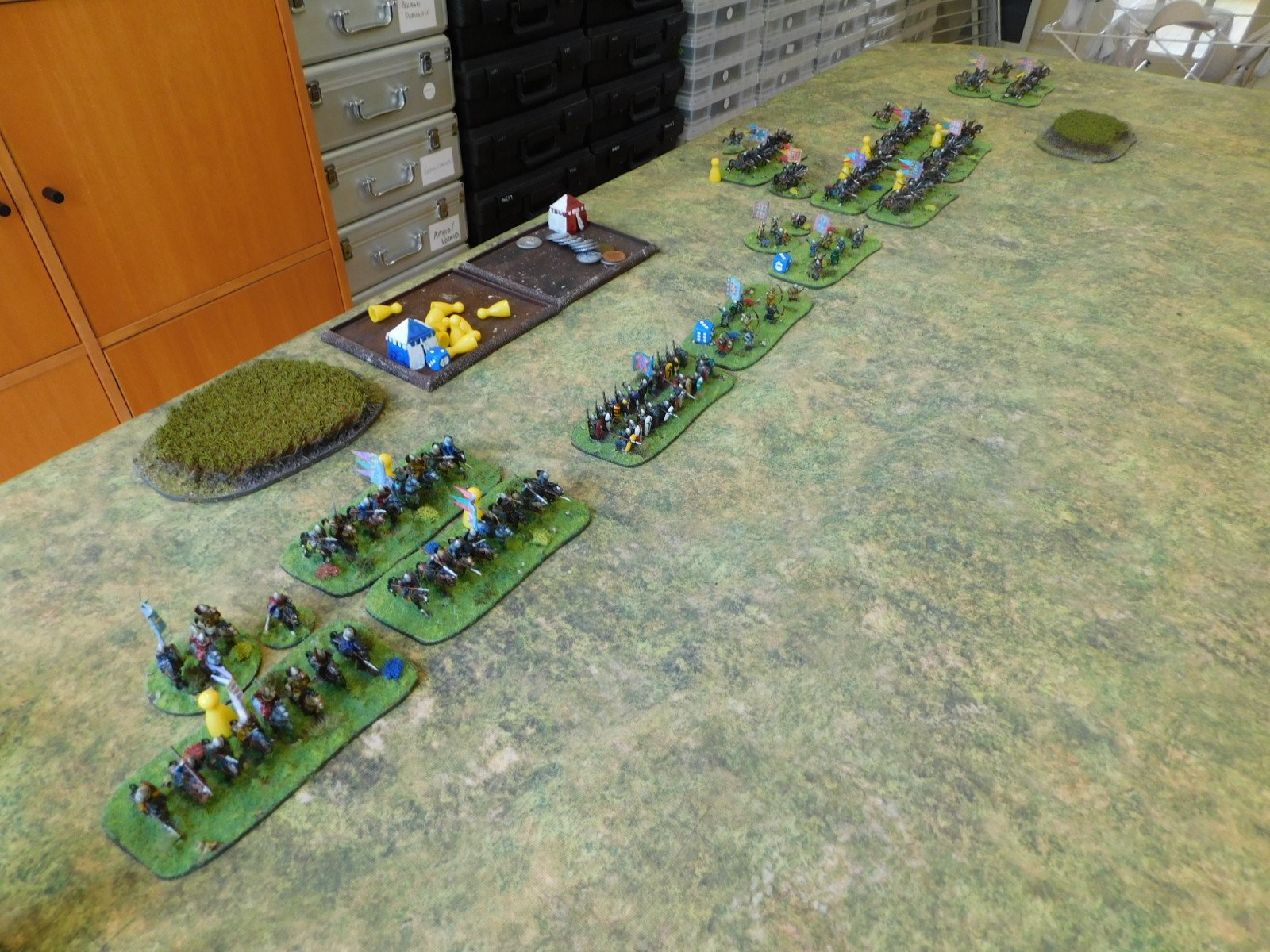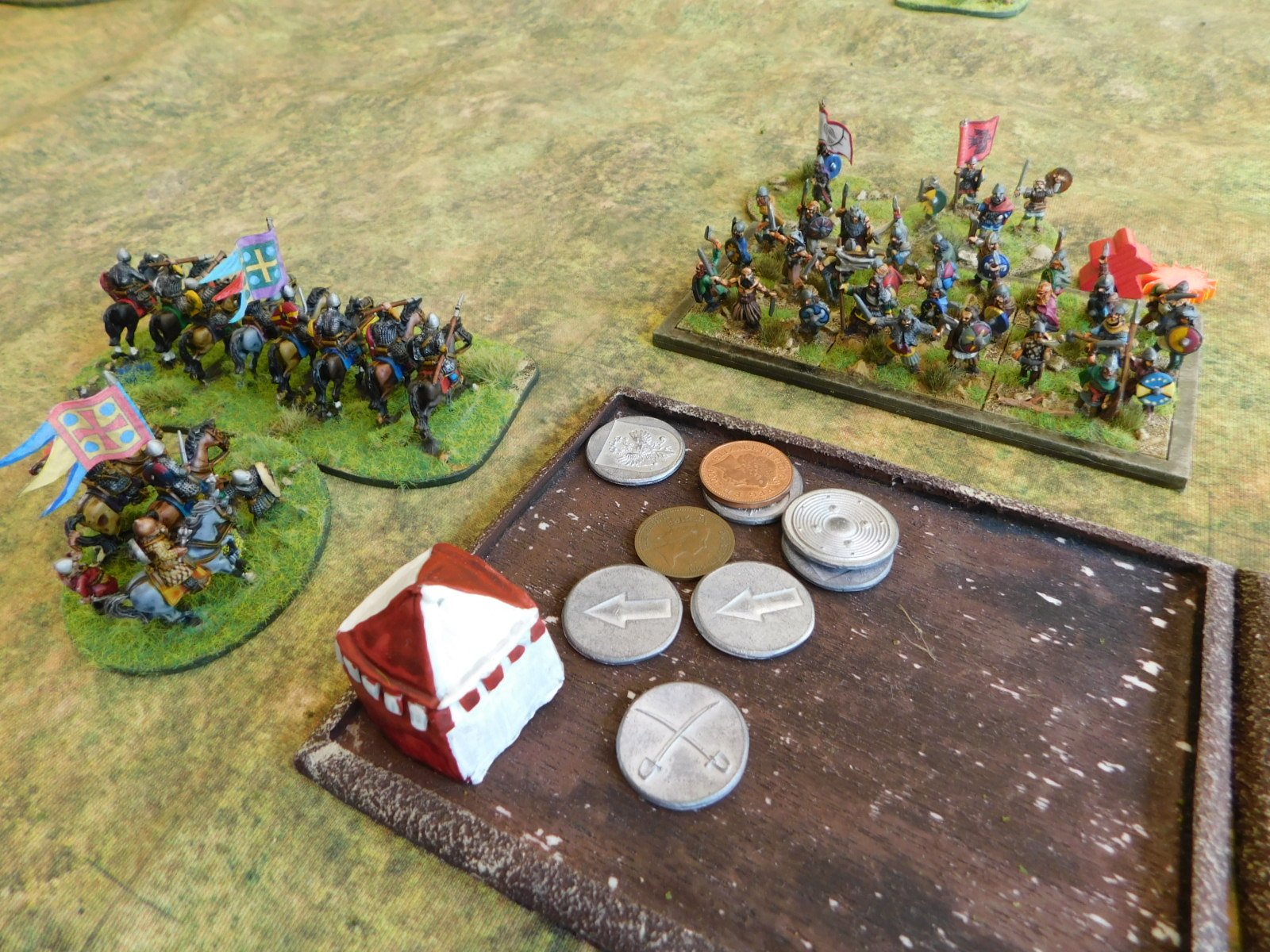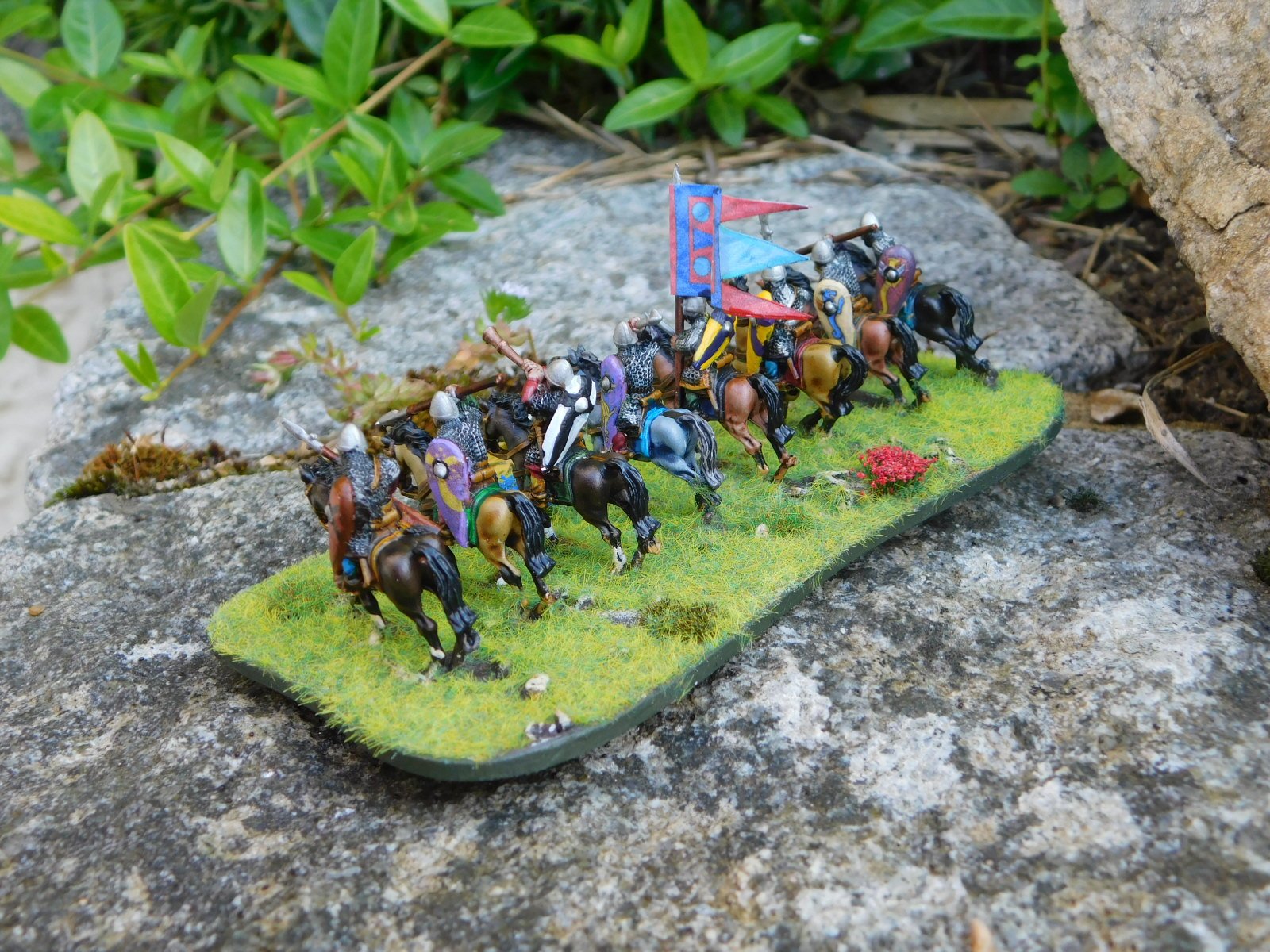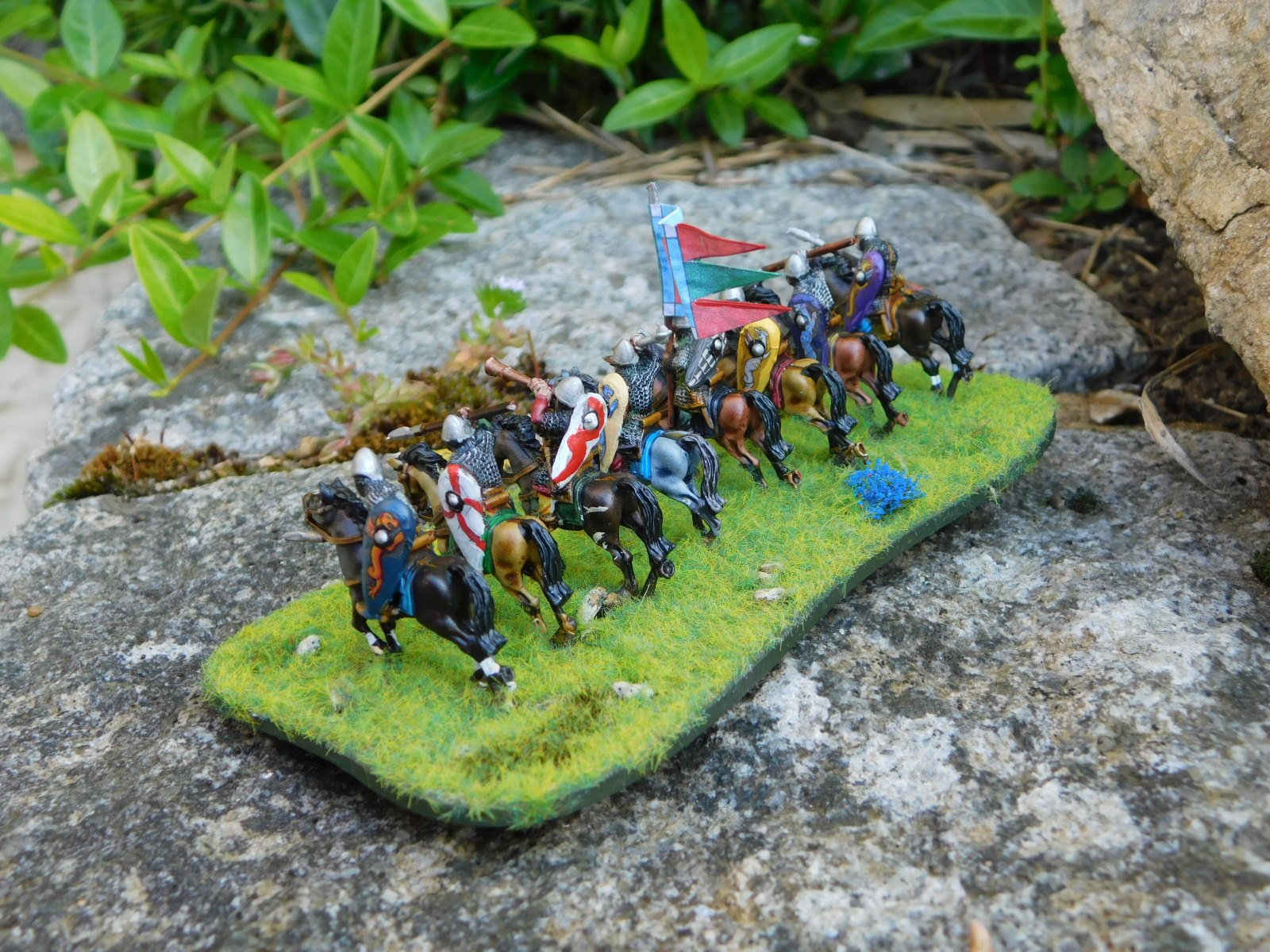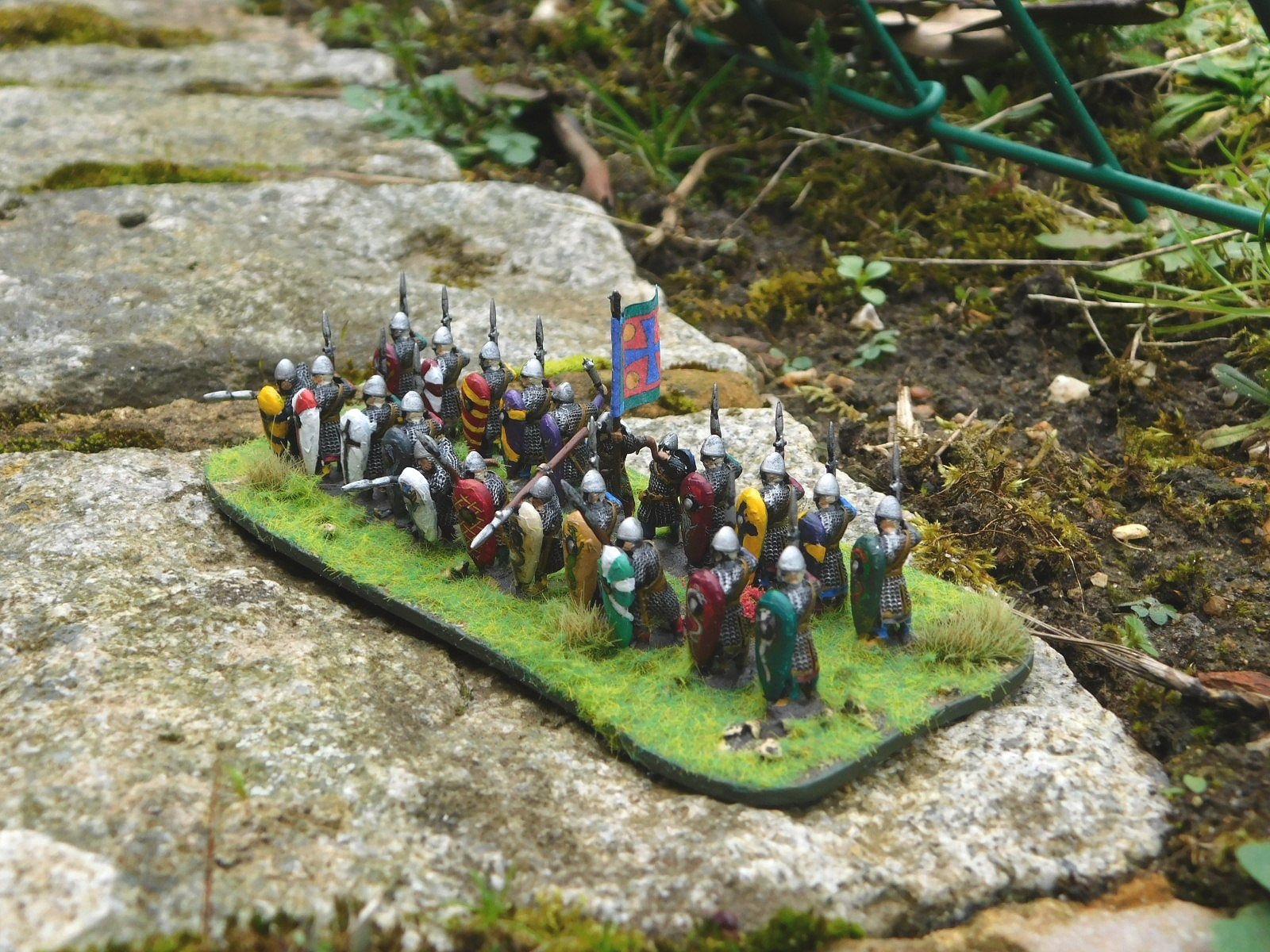TTS AAR: Timurids versus Normans
/Here’s an After Action Report left over from last year: a game against an old friend of mine, Nog, that I hadn’t seen for ages. He’s only an occasionaly wargamer, and hadn’t played To The Strongest before, so this would be a teaching/learning game rather than all out battle.
I was keen to get my two newest armies onto the table, so Nog would play the Normans and I would play the Timurids. Not historically accurate, maybe, but somewhat mimincing a Crusdaer-rtyle clash!
The Timurids ready for action
Nog’s normans
I had ther initiative, so decided to advnace forward rapidly in order to engage the enemy with bowfire before closing to polish off any left standing.
Unfortunately, my mass advance faltered with my very first card, leaving my troops awkwardly split: some forward, some not.
Amusingly, Nog then proceeded to draw an Ace for his first card, but this time for the foot command in the centre, leaving his horsemen charging forward with the infantry left behind, and a very attractive (to me, anyway) hole in the middle of his line.
In my eagerness to get into bow range I had forgotten that there’s nothing a Norman likes more than charging home, so all those points spent on missile weapons for my Timurids were somewhat wasted as suddenly I had heavy horse all over me!
Both sides rapidly began losing units in the melee that followed. Although my lighter bowmen were outclassed and had to evade backwards, I had enough heavy cavalry of my own to hold the centre, although I did have to deploy the kharash (driven slaves) to bolsetr my line.
As the Normans pushed forward, I did manage to get some of my troops around his left flank and prepared to start rolling the Frenchmen up.
This led to an extraordinary run of cards, as shown in the photo below:
For the unitiated:
Draw a 6 to move into a position to charge the enemy flank
Try to charge, but draw a 2
Use the General to re-draw, pull a 9 and in they go…but combat cards are A and 2 meanign two misses
Need to draw a natural 10 to go in again: 10 drawn, but 2 and 5 for combat mean two more misses
Need to draw another natural 10 to go in a third time: 10 drawn (!) and two 8’s mean two hits and the enemy flee the field
By this time neither of us had many men left at all, and most of mine were on the point of fleeing:
We were, in fact, both down to our last coin, so it was a case of sudden death: whoever loses the next unit loses the game and, as mentioned above, my troops were in a lot worse state than his.
Fortunately, however, the luck remained with me, and a charge with some light troops returning from having evaded, hit the back of some of his, and just managed to dash them from the field. The last coin and the victory were mine!
It had been a great game, full of incident an excitement. We both agreed that I had been foolish to allow the Normans to close with my troops so early on in the game, and that Nog had managed to snatch defeat from the jaws of victory, helped by a final surge of luck on my part at the end of the encounter.
Cracking stuff, and we’re both eagerly awaiting our next battle.












